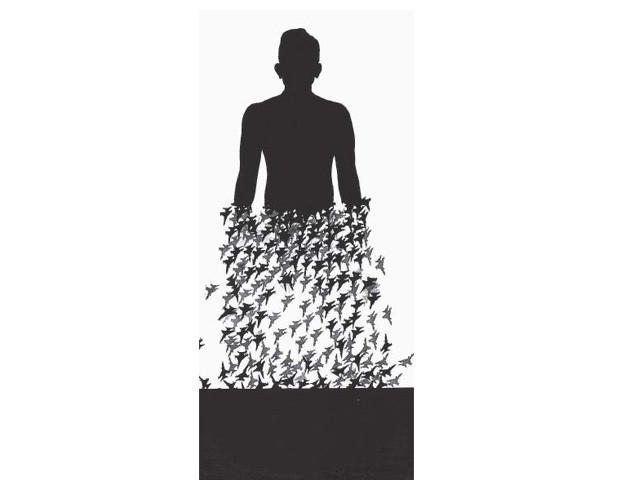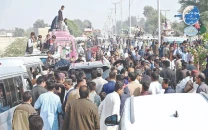Questioning the creation of man
Three artists explore what they believe to be of importance when examining the “Architecture of the Self”.

With their probe into the matters of identity, three artists explored what they believed to be of importance when examining and depicting the “Architecture of the Self”, an exhibition or works by Imran Mudassar, Haider Ali Jan and Noor Ali Chagani that opened at the Gandhara-art Space on October 16.
Perhaps the most moving were the Escher-like pieces by Mudassar, who worked with the human - specifically male - figure, using airplanes and flies as symbols of alien invasion on a human existence.
Mudassar’s pieces seem to question the very existence of man and his search for identity. His black-and-white pieces, peppered with hints of red, offer a disturbing perspective into the society we are living in, with the flies swarming around the protagonist in Mudassar’s work, attempting to force their way through the armour.
An especially fascinating piece is one in which planes appear to be invading a man’s personal territory - represented by the human body that is defenceless without an armour. The use of red in Mudassar’s work hints perhaps at the element of vulnerability - a human aspect that highlights the emotions behind the work.
Haider Ali Jan was brought up in Lahore’s old city, known for its celebration of Muharram and indeed the influences of a Shia culture make themselves apparent in his work. Calling the celebrations “both routine and larger than life”, Haider Ali proceeds to unfold the dramatic sequence of events through his work, “where everything is exaggerated and everyone is involved in some sort of a performance”.
Also conscious of the change in practices that are bound to geography, Haider Ali compares the nature and culture of a Muharram procession in Lahore - where thousands of mourners collect in narrow, congested lanes of the old city - to the procession in Karachi, where it passes through wider boulevards.
“The architecture of the procession changes with the architecture of the place,” he says - an apt description that is reflected in his flat-toned work. Haider Ali’s portrayal of a throng of men bumping against each other in efforts to move ahead is colourful in terms of representing the religious traditions as well as the human emotions that surface on such occasions.
Using bricks to represent units, Chagani plays with the idea of structure in his work. Banking on his training as a miniature painter, Chagani also uses the brick as a symbol of a dot, the most basic element in miniature painting. For Chagani, the repetitive use of a dot or unit symbolises strength, power and support while his use of the brick talks about land ownership and possession.
“It shows a constant struggle between retaining one’s identity and yet blending with the masses. It also communicates the need to be a part of a strong organization...or a system,” Chagani believes.
The exhibition will continue till November 16 at the Gandhara-art Space.
Published in The Express Tribune, October 19th, 2010.



















COMMENTS
Comments are moderated and generally will be posted if they are on-topic and not abusive.
For more information, please see our Comments FAQ